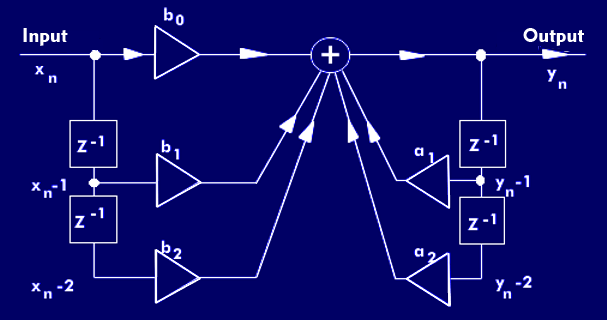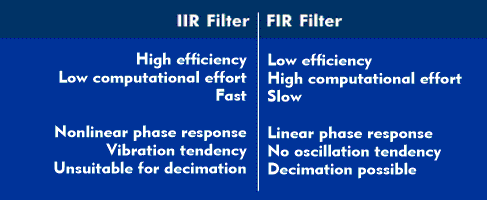infinite impulse response (filter) (IIR)
Digital filters are divided into Infinite Impulse Response (IIR) and Finite Impulse Response(FIR). While one operates with an infinite impulse response, the other operates with a finite one.
In the IIR model, which uses feedback, the impulse response expands infinitely over the time axis, which is similar to the behavior of an analog filter. Due to the feedback, each filtered output value depends not only on the input data stream, but also on the preceding filter output values.
In the IIR filter, the data stream of the values x(n) to be filtered passes through a series of delays Z(-1), within which the individual samples move one step further with each clock pulse, similar to a shift register. The data stream is multiplied by the filter coefficients b(0) to b(n) and a(0) to a(n), and the output voltage y(n) is formed by summing the x values. For the calculation of the output values y(n), IIR filters need all x-values available so far, so that y(n) is determined from the sum of all x(n) values.
The IIR filter contains feedbacks via the a coefficients, which, corresponding to a discrete analog filter, can favorably influence the characteristics, such as the steeper transition into the stopband.


